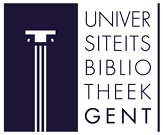Phytoremediation of Heavy Metal Contaminated Soil by Using Some Ornamental Plants
Abstract
This study aims to assess the effectiveness of two different varieties of ornamental plants in remediating soil contaminated with cadmium and lead. The study was a two-cycle pot experiment with three replications arranged in a completely randomized design. The treatments include ornamental plants and contamination levels. Ornamental plants include Solenostemon scutellarioides (L.) Codd. var. Religious radish and Red-trailing-queen; Codiaeum variegatum L. var. Gold dust and Oakleaf. The concentrations were P0 (Pb at 0 mg.kg-1, Cd at 0 mg.kg-1), P1 (Pb at 1000 mg.kg-1, Cd at 2 mg.kg-1), P2 (Pb at 1500 mg.kg-1, Cd at 5 mg.kg-1), and P3 (Pb at 2000 mg.kg-1, Cd at 10 mg.kg-1). Dry matter weight (DMW), bioconcentration factor (BCF), and translocation factor (TF) were determined after harvest. The results showed that all plants’ DMW of shoot > DMW of root. Codiaeum variegatum varieties had BCF and TF of Cd higher than that of S. scutellarioides varieties. Similarly, S. scutellarioides varieties showed higher BCF and TF of Pb; however, there is a limit to how much Pb S. scutellarioides varieties may absorb from the soil, as BCF of Pb decreased after 1500 mg.kg‑1 lead contamination. The study found that the ornamental plants had high TF and low BCF values at high cadmium and lead levels, indicating their role as phytostabilizers. Among the plants studied, Oakleaf was identified as the most efficient phytostabilizer for cadmium, while Religious radish proved to be the most effective for lead.
Keywords
Full Text:
PDFReferences
Abou Auda, M., & Ali, E. E. S. (2010). Cadmium and zinc toxicity effects on growth and mineral nutrients of carrot (Daucus carota). Pakistan Journal of Botany, 42(1), 341-351.
Alaboudi, K. A., Ahmed, B. M., & Brodie, G. (2018). Phytoremediation of Pb and Cd contaminated soils by using sunflower (Helianthus annuus) plant. Annals of Agricultural Sciences, 63(1), 123–127. https://doi.org/10.1016/j.aoas.2018.05.007
Antoniadis, V., Levizou, E., Shaheen, S. M., Ok, Y. S., Sebastian, A., Baum, C., Prasad, M., Wenzel, W. W., & Rinklebe, J. (2017). Trace elements in the soil-plant interface: Phytoavailability, translocation, and phytoremediation–A review. Earth-Science Reviews, 171, 621–645. https://doi.org/10.1016/j.earscirev.2017.06.005
Ashworth, J., Keyes, D., Kirk, R., & Lessard, R. (2001). Standard Procedure in the Hydrometer Method for Particle Size Analysis. Communications in Soil Science and Plant Analysis, 32(5–6), 633–642. https://doi.org/10.1081/css-100103897
Azeez, J. O., Yusuf, O. M., Busari, M. A., & GT, S. (2013). Evaluation of the Heavy Metals Remediation Potential of Cashew. Journal of Applied Agricultural Research, 5(2), 205-216.
Bakırdere, S., & Yaman, M. (2007). Determination of lead, cadmium, and copper in roadside soil and plants in Elazig, Turkey. Environmental Monitoring and Assessment, 136(1–3), 401–410. https://doi.org/10.1007/s10661-007-9695-1
Bremner, J. M. (1996). Nitrogen‐total. Methods of soil analysis: Part 3 Chemical methods, 5, 1085-1121.
Coscione, A. R., De Andrade, J. C., & Van Raij, B. (1998). Revisiting titration procedures for the determination of exchangeable acidity and exchangeable aluminum in soils. Communications in Soil Science and Plant Analysis, 29(11–14), 1973–1982. https://doi.org/10.1080/00103629809370086
De León, A. P., González, R., González, M. B., Mier, M. V., & Durán-Domínguez-De-Bazúa, C. (2011). Exploration of the Ability of Coleus blumeito Accumulate Aluminum. International Journal of Phytoremediation, 13(5), 421–433. https://doi.org/10.1080/15226514.2010.483263
Eid, E. M., & Shaltout, K. H. (2014). Monthly variations of trace elements accumulation and distribution in above- and below-ground biomass of Phragmites australis (Cav.) Trin. ex Steudel in Lake Burullus (Egypt): A biomonitoring application. Ecological Engineering, 73, 17–25. https://doi.org/10.1016/j.ecoleng.2014.09.006
Ghafoori, M., Majid, N. M., Islam, M. M., & Luhat, S. (2011). Bioaccumulation of heavy metals by Dyera costulata cultivated in sewage sludge-contaminated soil. African Journal of Biotechnology, 10(52), 10674–10682. https://doi.org/10.5897/ajb11.180
Hendershot, W. H., Lalande, H., & Duquette, M. (2007). Soil reaction and exchangeable acidity. In CRC Press eBooks. https://doi.org/10.1201/9781420005271.ch16
Herlina, L., Widianarko, B., & Sunoko, H. R. (2020a). Phytoremediation potential of cordyline fruticosa for lead-contaminated soil. Jurnal Pendidikan IPA Indonesia, 9(1), 42–49. https://doi.org/10.15294/jpii.v9i1.23422
Herlina, L., Widianarko, B., Purnaweni, H., Sudarno, S., & Sunoko, H. R. (2020b). Phytoremediation of Lead Contaminated Soil Using Croton (Cordiaeum variegatum) Plants. Journal of Ecological Engineering, 21(5), 107–113. https://doi.org/10.12911/22998993/122238
Hossain, M. B., Masum, Z., Rahman, M. S., Yu, J. C., Noman, M. A., Jolly, Y. N., Begum, B. A., Paray, B. A., & Arai, T. (2022). Heavy Metal Accumulation and Phytoremediation Potentiality of Some Selected Mangrove Species from the World’s Largest Mangrove Forest. Biology, 11(8), 1144. https://doi.org/10.3390/biology11081144
Hussain, A., Abbas, N., Arshad, F. M., Akram, M., Khan, Z. I., Ahmad, K., Mansha, M., & Mirzaei, F. (2013). Effects of diverse doses of Lead (Pb) on different growth attributes of Zea-Mays L. Scientific Research, 04(05), 262–265. https://doi.org/10.4236/as.2013.45037
Jacob, J. M., Karthik, C., Saratale, R. G., Kumar, S. S., Prabakar, D., Kadirvelu, K., & Pugazhendhi, A. (2018). Biological approaches to tackle heavy metal pollution: A survey of literature. Journal of Environmental Management, 217, 56–70. https://doi.org/10.1016/j.jenvman.2018.03.077
Kumar, B., Jothiramalingam, S., Thiyagarajan, S., Hidhayathullakhan, T., & Nalini, R. P. (2014). Phytoremediation of Heavy Metals from Paper Mill Effluent Soil Using Croton sparsiflorus. International Letters of Chemistry, Physics and Astronomy, 36, 1–9. https://doi.org/10.18052/www.scipress.com/ilcpa.36.1
Liu, J., Xin, X., & Zhou, Q. (2018). Phytoremediation of contaminated soils using ornamental plants. Environmental Reviews, 26(1), 43–54. https://doi.org/10.1139/er-2017-0022
Majid, N. M. N. A., Islam, M. M., Rauf, R. A., Ahmadpour, P., & Abdu, A. (2012). Assessment of heavy metal uptake and translocation in Dyera costulata for phytoremediation of cadmium contaminated soil. Acta Agriculturae Scandinavica Section B-soil and Plant Science, 62(3), 245–250. https://doi.org/10.1080/09064710.2011.603740
Mehes-Smith, M., Nkongolo, K. K., & Cholewa, E. (2013). Coping mechanisms of plants to metal-contaminated soil. In InTech eBooks. https://doi.org/10.5772/55124
Nanda, S. P., & Pradhan, A. (2019). Role of Ornamental Plants in Phytoremediation Of Environmental Pollutants and Economic Benefits. https://www.researchgate.net/publication/333370403_role_of_ornamental_plants_in_phytoremediation_of_environmental_pollutant_and_economic_benefits.
Ogunwenmo, K. O., Idowu, O., Innocent, C. O. C., Esan, E. B., & Oyelana, O. (2007). Cultivars of Codiaeum variegatum (L.) Blume (Euphorbiaceae) show variability in phytochemical and cytological characteristics. African Journal of Biotechnology, 6(20), 2400–2405. https://doi.org/10.5897/ajb2007.000-2376
Okunlola, A. I., Arije, D. N., & Olajugbagbe, K. O. (2021). Evaluation of ornamental plants for phytoremediation of contaminated soil. In IntechOpen eBooks. https://doi.org/10.5772/intechopen.93163
Ramana, S., Biswas, A. K., Singh, A., Ajay, A., Ahirwar, N. K., & Rao, A. S. (2014). Tolerance of Ornamental Succulent Plant Crown of Thorns (Euphorbia milli) to Chromium and its Remediation. International Journal of Phytoremediation, 17(4), 363–368. https://doi.org/10.1080/15226514.2013.862203
Saghi, A., Mohassel, M. H. R., Parsa, M., & Hammami, H. (2015). Phytoremediation of lead-contaminated soil by Sinapis arvensis and Rapistrum rugosum. International Journal of Phytoremediation, 18(4), 387–392. https://doi.org/10.1080/15226514.2015.1109607
Salas-Luévano, M. Á., Mauricio-Castillo, J. A., González-Rivera, M. L., Vega-Carrillo, H. R., & Salas-Muñoz, S. (2017). Accumulation and phytostabilization of As, Pb, and Cd in plants growing inside mine tailings reforested in Zacatecas, Mexico. Environmental Earth Sciences, 76(23). https://doi.org/10.1007/s12665-017-7139-y
Sani, Y. A, Isah, A. S., Babaji, B. A., Barnabas, S., Yahaya, R. A. & Hassan, M. B. (2016). Identification and Description of Some Common Ornamental Plant Species at Ahmadu Bello University Zaria, Nigeria. (2016, December 8). Advances in Nutrition & Food Science, 1(1). https://doi.org/10.33140/anfs.01.01.04
Schumacher, B. A. (2002). Methods for the determination of total organic carbon (TOC) in soils and sediments (pp. 1-23). Washington, DC: US Environmental Protection Agency, Office of Research and Development, Ecological Risk Assessment Support Center.
Suva, M. A., Patel, A. M., & Sharma, N. (2015). Coleus species: Solenostemon scutellarioides. Inventi Rapid: Planta Activa, 2, 1-5.
Tüzen, M. (2003). Determination of heavy metals in soil, mushroom, and plant samples by atomic absorption spectrometry. Microchemical Journal, 74(3), 289–297. https://doi.org/10.1016/s0026-265x (03)00035-3
Vargas, C. R., Pérez‐Esteban, J., Escolástico, C., Masaguer, A., & Moliner, A. (2016). Phytoremediation of Cu and Zn by vetiver grass in mine soils amended with humic acids. Environmental Science and Pollution Research, 23(13), 13521–13530. https://doi.org/10.1007/s11356-016-6430-x
Venkateswarlu, K., Nirola, R., Kuppusamy, S., Thavamani, P., Naidu, R., & Megharaj, M. (2016). Abandoned metalliferous mines: ecological impacts and potential approaches for reclamation. Reviews in Environmental Science and Bio/Technology, 15(2), 327–354. https://doi.org/10.1007/s11157-016-9398-6
Wang, K., Huang, H., Zhu, Z., Li, T., He, Z., Yang, X., & Alva, A. K. (2013). Phytoextraction of metals and rhizoremediation of PAHs in Co-Contaminated soil by Co-Planting ofSedum alfrediiwith ryegrass (Lolium perenne) or Castor (Ricinus communis). International Journal of Phytoremediation, 15(3), 283–298. https://doi.org/10.1080/15226514.2012.694501
World Health Organization (WHO). (1996). Permissible limits of heavy metals in soil and plants. Geneva, Switzerland.
Xing, W., Liu, H., Banet, T., Wang, H., Ippolito, J. A., & Li, L. (2020). Cadmium, copper, lead, and zinc accumulation in wild plant species near a lead smelter. Ecotoxicology and Environmental Safety, 198, 110683. https://doi.org/10.1016/j.ecoenv.2020.110683
Zacchini, M., Pietrini, F., Mugnozza, G. S., Iori, V., Pietrosanti, L., & Massacci, A. (2008). Metal Tolerance, Accumulation and Translocation in Poplar and Willow Clones Treated with Cadmium in Hydroponics. Water, Air, & Soil Pollution, 197(1–4), 23–34. https://doi.org/10.1007/s11270-008-9788-7
Refbacks
- There are currently no refbacks.


























